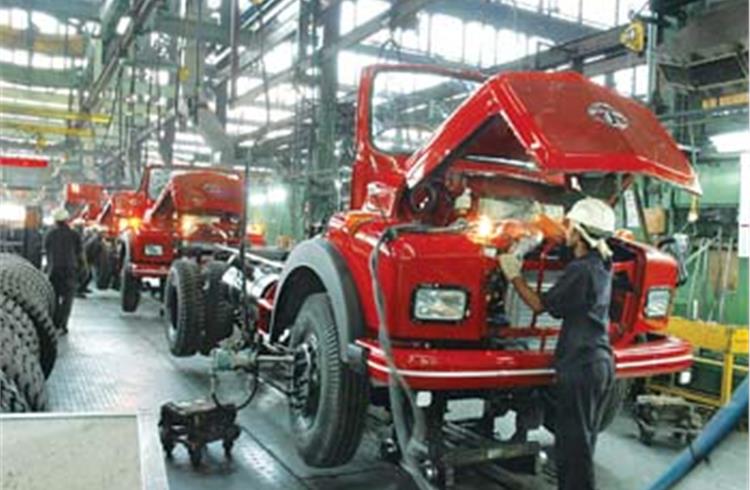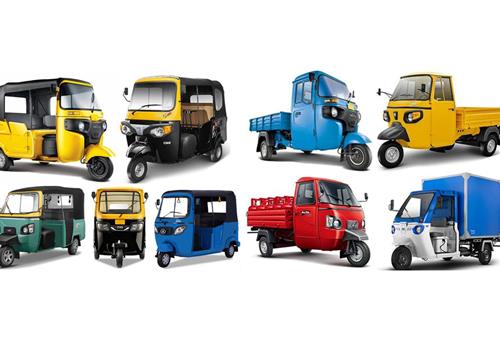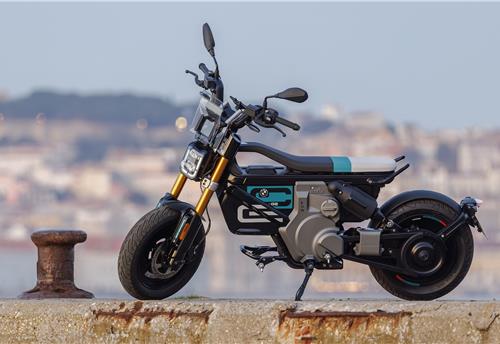Industry drops to new lows in Dec
Auto industry sales continued their decline in December 2008, despite the four percent cut in excise duty and the government’s stimulus package which was aimed at boosting liquidity and making vehicle finance more easily and cheaply available. Sales of commercial vehicles, two-wheelers and utility vehicles were particularly badly affected as high interest rates and poor consumer confidence took their toll on sales.
According to the Society of Indian Automobile Manufacturers (SIAM), the impact of the first stimulus package does not seem to be reflected in the December numbers. The cumulative production from April to December 2008 shows that production grew just 3.56 percent over the same period in the previous year. Significantly however in December itself, production dropped a massive 21.96 percent over December 2007. The industry body is now urging the government to take further action to stimulate the auto sector. Rather shockingly, there was no production of several car models like the Honda Civic, Honda Accord, Mercedes C-class and E-class, as well as the Toyota Corolla and Camry.
Passenger vehicle sales in India declined 0.46 percent during April to December 2008, with passenger cars falling 0.28 percent, UVs by 4.82 percent and multi-purpose vehicles increasing by 7.82 percent in the period. More dismally, December 2008 sales of passenger vehicles fell by 13.86 percent, with utility vehicle sales declining a huge 44 percent.
The picture was even bleaker for commercial vehicles which declined by 15.52 percent during April to December 2008. The sharpest fall was in the medium and heavy CV segment, which dropped by 23.85 percent. Meanwhile, light CVs dropped 5.4 percent. But the real sales crisis emerges when you look at the December 2008 numbers. Commercial vehicle sales fell by 58.29 percent in the month, compared to 2007, with medium and heavy CVs falling by an astounding 71.19 percent and LCV dropping by 41.97 percent. Also, medium and heavy buses fell by 32.79 percent and even smaller buses fell by 37.18 percent.
Three-wheeler sales dropped 5.86 percent in April to December 2008, with passenger carriers growing 13.38 percent during the period. However, goods carriers declined a precipitous 38.44 percent. In December itself, three-wheelers fell by 28.99 percent. Two-wheelers on the other hand registered marginal growth of 1.85 percent during April to December 2008. While mopeds and scooters grew 5.04 percent and 8.36 percent respectively, motorcycles grew by 0.30 percent. This was mostly due to lack of easy finance which has particularly impacted bike sales. In December 2008 itself, two-wheeler sales dropped 15.43 percent over the same month the previous year. Exports grew 33 percent during the first nine months of the fiscal year, with all segments except CVs, registering positive growth. The passenger vehicle and two-wheeler segments grew by 66.20 and 31.18 percent respectively. The 65 percent increase in Hyundai i10 exports to 29,000 units was one of the primary reasons for higher car exports this year. However the export of CVs declined 13.51 percent in this period.
According to SIAM, one of the major drivers of a future recovery in demand is a drop in the current level of vehicle finance interest rates. They are currently around 14 to 15 percent but the government's recent efforts at injecting liquidity into the system should see them drop to around 12 to 13 percent in the coming months. This should have a positive effect on sales, particularly car and two-wheeler sales. Sales in December are traditionally lower as prospective buyers wait till the New Year to register a vehicle since it would fetch a better resale value.
Among passenger cars, sales of the new Maruti A-star got off to a decent start in December with 3,247 units being sold; currently dealers are quoting waiting periods of between four to six weeks for this model. The Dzire saloon continues to sell very strongly for Maruti with 6,043 units being sold, particularly the diesel version which has a two-month waiting period. Price cuts to the Santro saw its sales jump to 9,510 units, a remarkable feat for a model that was first introduced into India a decade ago. Its sibling the i20 hatchback, introduced in late December, sold only 195 units, but expect this figure to be significantly higher in January 2009, as Hyundai ramps up production.
The recovery in demand for CVs is likely to take some time, inspite of recent efforts to boost the sector. Until goods movement starts increasing, truck buyers will simply not buy them, even if finance becomes cheaper and more easily available over time.
RELATED ARTICLES
Mahindra XUV300 tops 250,000 sales ahead of XUV3XO reveal
The popular compact SUV, which ranks among India’s Top 20 utility vehicles for FY2024, is among the SUVs which have powe...
Bajaj Auto sells 463,413 three-wheelers in FY2024, increases market share to 67%
Three-wheeler market leader Bajaj Auto increases its dominance in both passenger and cargo model sales with best-ever fi...
SCOOP! TVS Motor begins exporting made-in-India BMW CE 02 e-scooter
TVS Motor Co, which has a longstanding strategic partnership with BMW Motorrad since April 2013 for manufacture of the 3...





 By Autocar Pro News Desk
By Autocar Pro News Desk
 29 Jan 2009
29 Jan 2009
 2373 Views
2373 Views









